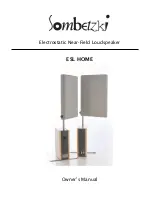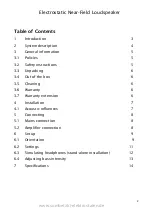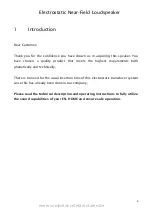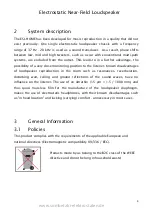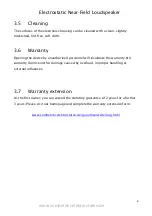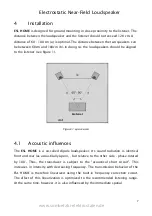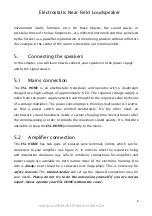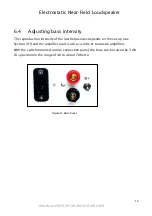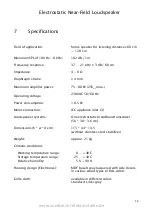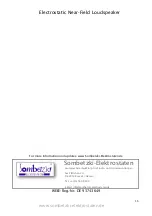
Electrostatic Near-Field Loudspeaker
8
www.sombetzki-elektrostaten.de
environment (walls, furniture, etc.). On these objects, the sound waves, in
particular those of the low frequencies, are reflected (mirrored) and thus perceived
by the listener as a powerful reproduction. A monitoring position without reflectors
(for example in the center of the room) is therefore not recommended.
5.
Connecting the speakers
In this chapter, you will learn how to connect your speakers to the power supply
and to the signal source.
5.1
Mains connection
The
ESL HOME
is an electrostatic transducer and operates with a diaphragm
charged at a high voltage of approximately 6 kV. The required voltage supply is
taken from the power supply network and brought to the required value by means
of a voltage multiplier. The power consumption is thereby small (under 0.3 watts),
so that a power switch was omitted deliberately. On the other hand, an
electrostatic sound transducer needs a certain charging time (several hours) after
the commissioning in order to provide the maximum sound quality. It is therefore
advisable to keep the
ESL HOME
permanently to the mains.
5.2
Amplifier connection
The
ESL HOME
has two pairs of isolated pole terminals (4mm), which can be
connected to your amplifier (see figure 2). In order to meet the respective living
and installation situations (e.g. sofa or armchair), connections for amplifiers and
power supply are available on both narrow sides of the electronic housing. One
side is
always
kept closed by a screwed cover (logo plate). This is necessary for
safety reasons
. The
trained dealer
will set up the required connection area for
your needs.
Please do not try to do the conversion yourself if you are not an
expert.
Never operate your ESL HOME without the cover.

